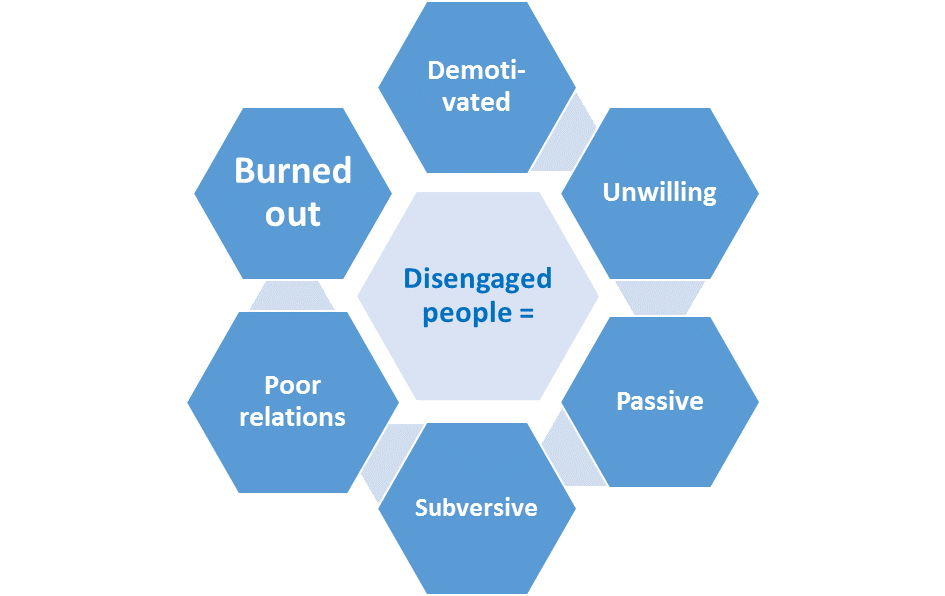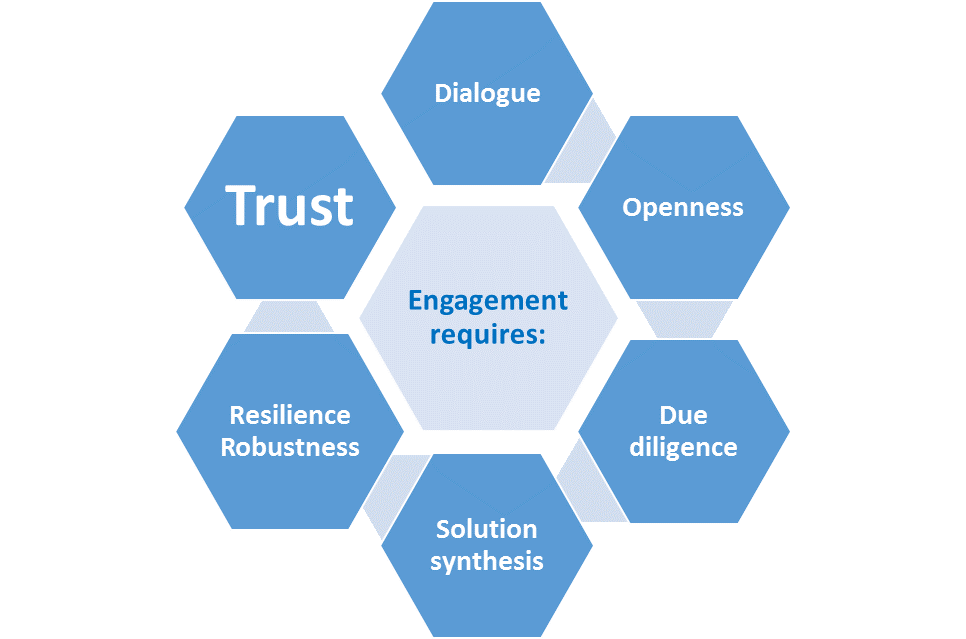A company exists for a specific purpose – the delivery of specific value to the company’s stakeholders! The company’s purpose is realized as its corporate mission!
How does the successful leader realize the corporate mission?
Research(1) shows that leaders follow various ways in their effort to accomplish their mission. However, most of them are not successful in the long term –in many cases not even in the medium term.
Why?
Because even when they recognize that the single formula for success dictates that “strategy and structure must follow alignment and engagement on the corporate purpose and hence mission” and even if they manage to achieve alignment, they fail to bring about engagement –i.e. to win the minds and hearts of the management team and then of the great majority of the company people, so that they do their utmost in executing the (mission dictated) corporate processes and the (vision dictated) strategic projects.
Research(1) shows that one-in-five to one-in-three top team members in many successful countries (from Scandinavia to Central Europe and to South Africa and from China to USA and to Argentina) report fundamental divisions -with regard to culture, mission, vision and implementation issues- within the top executive team -also that 35% to 80% believe that many serious outstanding issues are not aired and discussed among top teams because they are considered too sensitive!
What is oxymoron, though not surprising, is that board members rate their board and themselves high against numerous hard and soft measures while executive management down rate their board colleagues by 40%!
In many companies there exist poor relationships and trust among the board members, between board and top management and between management at all levels. The culture of poor relationships starts at the top and is propagated down the hierarchy to the ground floor. Research shows that external board members have poor insight into the reality of how ‘their’ company operates. Reversely, managers at all levels know what is wrong, but they don’t ‘dare’ raise the issues. Obvious result: disengagement!
Disengagement
- means demotivated people;

- equates to an unwillingness to go to work;
- often means subversive and damaging behaviour, not only by employees but also by managers;
- leads to passivity;
- leads to poor relationships with the “immediate supervisor”;
- leads to ‘burnout’!
Research shows that only three-in-ten employees are fully engaged, while one-in-four is disengaged!
To achieve engagement, leaders must acknowledge that value for the customer, for the employees, for all stakeholders is created and delivered through people, not technology!
Successful leaders recognize that
- engagement is built on dialogue and trust;

- it is the leader’s job and duty to create a culture of open and constructive dialogue and sincere interrogation of all issues, to provide intellectual due diligence and to push for the search for the best solutions and working together to improve proposals so that all concerned identify themselves with the conclusion and decision –recognizing at the same time each one’s view and contribution;
- leaders require resilience and robustness to encourage, listen actively and endure criticism; and last but not least
- trust is essential so as to achieve transparency and dialogue and avoid defensive silence and destructive debate.
_______________________________________________________________
(1) The Successful Formula – How Smart Leaders Deliver Outstanding value, Andrew Kakabadse, ISBN: 978-1-4729-1684
30.10.2015


